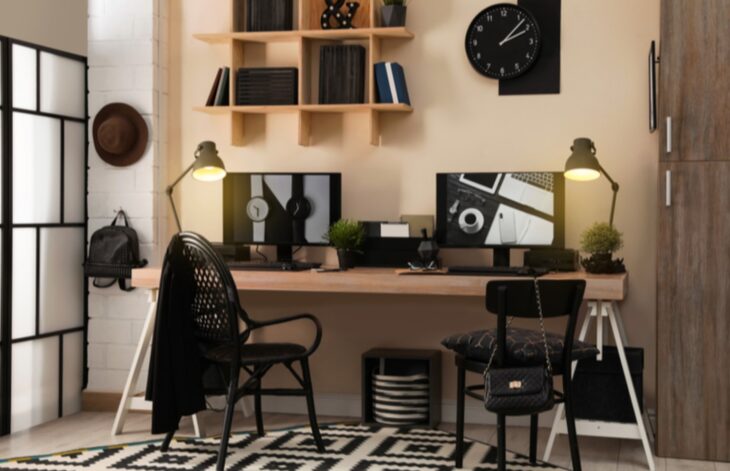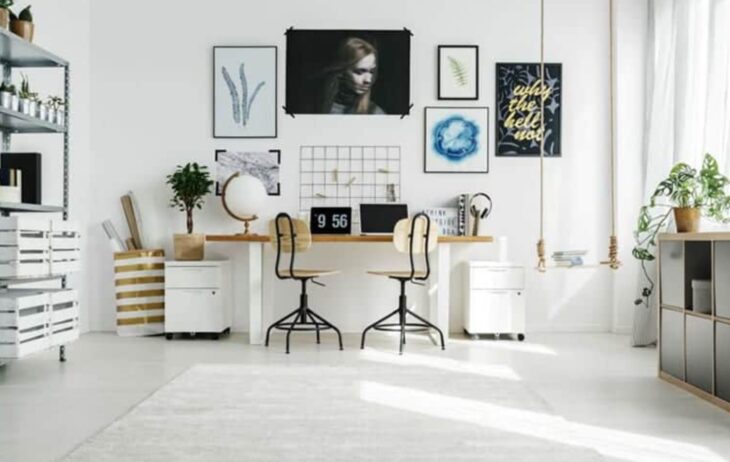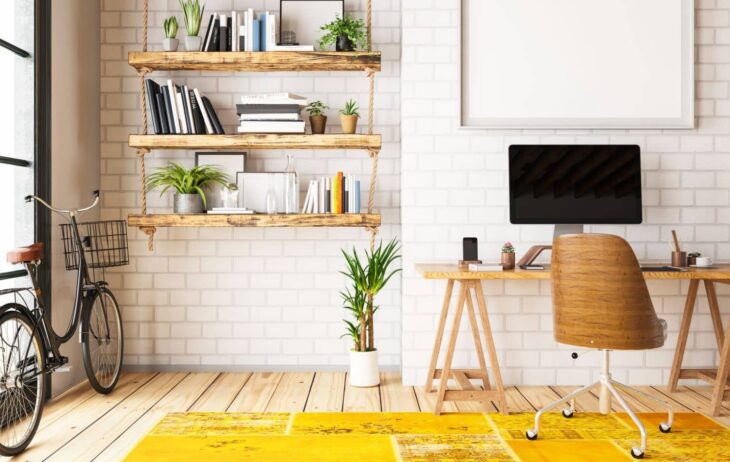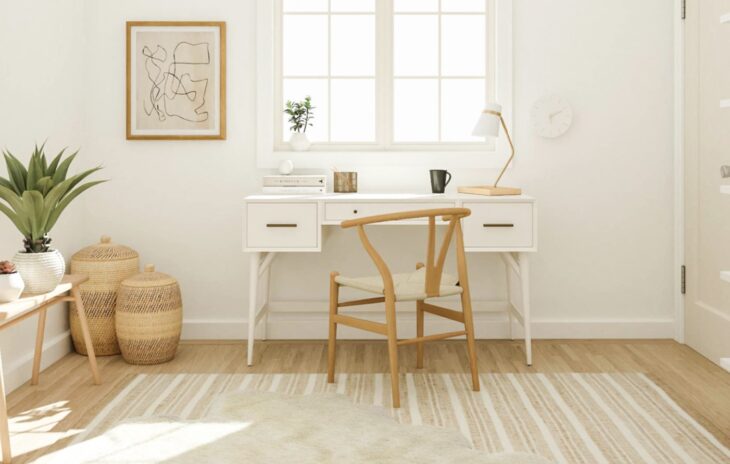Many people – employees, businesses, and the self-employed alike – are beginning to appreciate the benefits of working from home. Not only does it mean more flexibility, but it can be a lot more comfortable and convenient. There are many jobs that don’t need to be done in a centralised office space, and the number of jobs on that list is increasing daily. With that in mind, you may be considering working from home yourself, or you may soon find yourself in a situation where working from home is mandated. Being a home-worker requires the perfect home office, so we’re here to help you. Here’s how you can build the perfect home office with no DIY expertise and no prior knowledge.

Source: SnackNation
Contents
Set aside a room
Trust us when we say that simply allocating a certain portion of an existing room won’t work if you’re building a home office. You’ll need an entire room for office space because otherwise, you’ll likely be distracted by whatever else is in the room. For this purpose, it’s a very good idea to consider made-to-measure home office spaces. Fitting an office into an existing room is entirely possible if you maximise the space available to you and don’t waste an inch of it. If you’re looking for more inspiration, you can check out these home office design ideas listed on DIYHomefit ; there are potential starting points there for rooms of all shapes and sizes.
Get the right furniture
It’s not worth going cheap when you buy office furniture. After all, you’ll be spending a significant amount of time in your office chair and sitting at your desk. With that in mind, you need to make sure you’re buying office furniture (or repurposing it from elsewhere in the home) that both works for the space in which it’s situated and is adequate for the purpose of potentially extended periods of working. A basic home office at the very least requires a desk, a chair, good lighting (more on which later), and any equipment you require to get your job done. Don’t skimp on good furniture; you’ll regret doing so when you’re not getting the most out of your work.

Source: Women Love Tech
Ensure sufficient light
When we talk about home office lighting, we don’t just mean illumination by way of lamps and electric light (although that is also essential). No, we’re mainly referring to the presence of natural light in your office environment. Natural light is vital for maintaining a healthy working atmosphere; when you don’t have natural light, your mental and physical health can seriously suffer. That means making sure that there is at least one window in your home office; that it’s positioned in a way so that you’re not blocking the light; and that you don’t block it or keep it obscured constantly by curtains or blinds (unless the sun is intrusive, of course).
Minimise distractions
One of the most crucial aspects of a home office is minimising distractions. That doesn’t necessarily mean you need to soundproof the space (although if you can do that and you have a busy home environment otherwise, so much the better). It does, however, mean that you shouldn’t fill your home office with potential distractions like hobby objects or gaming paraphernalia. Of course, an internet connection is inevitable when you’re working from home, but there are plenty of tools that will help you maintain focus and stop you from procrastinating by blocking certain sites. It’s important to make sure your office space is just that: an office and not simply a leisure room.

Source: Bestar
Add plants
No, really. Plants are an excellent way to make a home office space not only feel more welcoming, but also to bolster your physical and mental health. Plants achieve this in a number of ways; they improve the air quality, lower stress, and can even increase reaction speed and help you maintain a productive atmosphere. Spider plants and Boston ferns are excellent choices for a home office; they don’t take too much looking after, and you’ll start to feel the benefits they provide almost immediately. Even if you’re not interested in the health benefits, making your space more green improves your mood passively, too.
Don’t forget to decorate
Just because you’re minimising distractions in your home office doesn’t mean it can’t feel like a personalised space. It’s still very important to make sure your office feels like yours; if it’s too cold and neutral, you won’t want to be in there for long periods of time. There’s a very fine line between just cozy enough and too cozy, though. Your office should still feel professional; it should be somewhere you feel galvanised to work, not somewhere in which you simply want to relax and do nothing. This means warm, bright colours like yellow or orange; it means installing art on the walls that isn’t too provocative but is still thought-provoking; and it means tasteful, minimalist decor.

Source: Bestar
Keep it clean
Nothing screams “lack of productivity” like an untidy, unclean home office. “Mess causes stress” might be a slightly neat maxim, but there’s more than a grain of truth to it. A messy environment can make your mind feel cluttered and unfocused; the chaos around you is mirrored by the chaos in your head and you can’t buckle down and get to work. That’s why it’s crucial to keep your desk and your office environment free of clutter and well-organised. Make sure you spend at least some downtime re-organising your space so that it looks and feels neat. It’ll be worth it in the long run; reducing desk clutter means reducing stress.
Maintain a schedule
Working from home can feel unstructured, especially if you don’t draw up a regular schedule for yourself. It’s very important to stick to something that at least resembles office hours. That means allocating regular breaks for yourself, and it also means stopping your work when it’s time to “clock off”, even if you’re in the middle of something. Giving up working in an office space doesn’t mean giving up your fundamental rights as a human being, and one of those is to leave your work behind when it’s time to stop. If you’re living with a family, they’ll thank you for it; if you’re alone, your mind will feel that much more refreshed for your keeping a regular “timesheet”, so to speak.

Source: Modsy Blog
